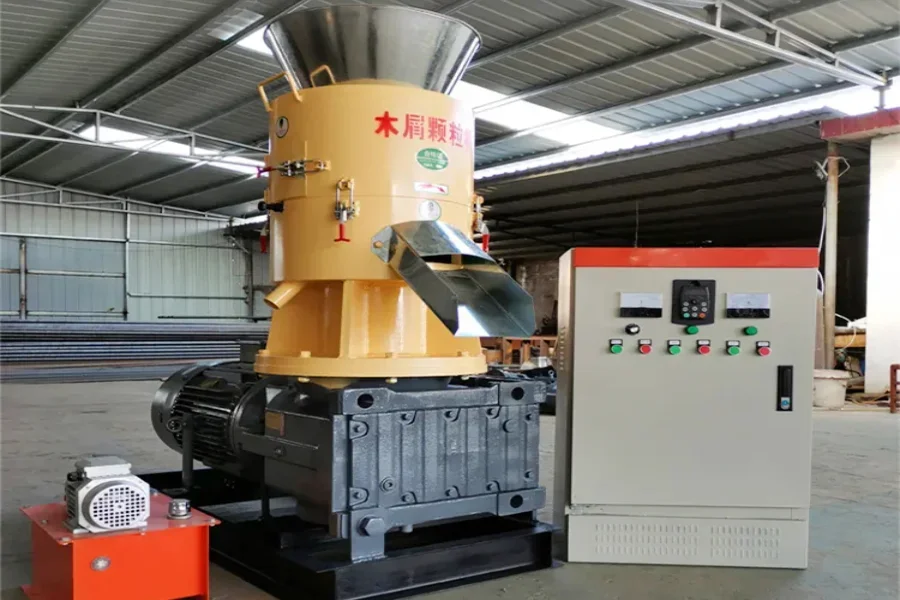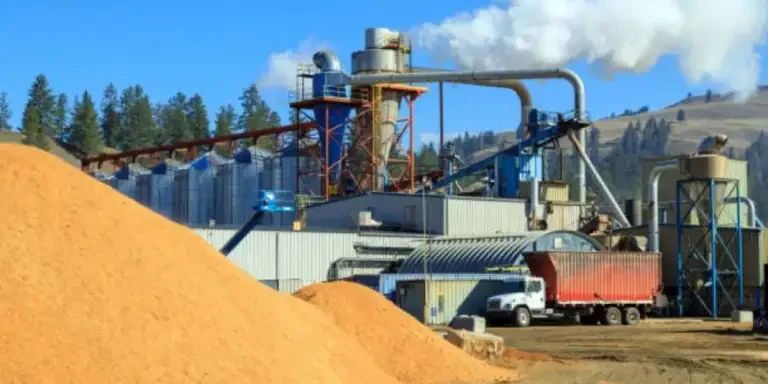Wood pellet mills are used to make pellets for business and even for homes. Only when using suitable wood pellet machines, will you be able to produce quality pellets. There are many wood pellet machines on the market, making it hard to know which ones are the best option. Also, these wood pellet machines are available in different types, which means they operate differently, and the capacity also differs.
This article will explain the different types of wood pellet mills available and how to select the perfect machine. It will also highlight the market share for wood pellet mills.
Table of Contents
Market share for wood pellet mills
Types of wood pellet mills
How to select the right wood pellet mill
Conclusion
Market share for the wood pellet mills

The wood pellet machinery global market is segmented by type, manufacturer, application, and region. The main types of wood pellets are flat die and ring die pellet mills. Based on application, the segments are plastic additives, pharmaceuticals, catalysts, rubber accelerators, among others. Some key manufacturers include GEMCO, Biomass Pellet Machine, and Beston. The main markets for wood pellet mills are Europe, North America, Asia Pacific, the Middle East & Africa, and South America.
Generally, the rising demand for wood pellets has been the main drive in the global wood pellet mills market growth. According to Transparency Market Research, wood pellets are prepared from by-products of the forest industry. They are compressed biomass cylinders with a 40mm average length and about 6mm to 8mm diameter. The recognition of wood pellets as a biomass fuel source has increased the need for pellet mills.
Key wood pellet machinery producers significantly influence the global pellet mills market as they heavily invest in new technologies. They are also focusing on online product marketing and innovative product development. Additionally, effective expansion of industry operations in untapped markets via partnerships and strategic acquisitions will expand the market significantly over the years.
Types of wood pellet mills
1. Flat die pellet mills

A flat die pellet mill is an ideal pelletizing machine usually used to create small-scale wood pellets for home heating and other uses. The machine also has a broad application in animal bedding plants. Structurally, below a series of compression rollers is a solid metallic plate. Materials enter from above, fall through the rollers, and get compressed via the die. The finished products emerge from the base of the die and leave the pellet machine.
Pros
- It is convenient to monitor the pelletizing process from the pelletizing chamber
- Small in size and light in weight, thus can occupy less space and is easily portable
- The mill can be easily cleaned and maintained
- It is relatively cheaper because of its design
Cons
- Not suitable for large-scale wood pellets production
- The gap between the die and the rollers slows down pellets production
- A large percentage of soft pellets may break into powder
2. Ring die pellet mills
A ring die pellet mill is a key piece of equipment used in processing raw materials like tree branches, wood chips, logs, sawdust, crop straw, etc., into pellets. It is vertically positioned, where the raw materials enter the center of the die and are compressed via the die alongside a series of compression rollers. The ring die pellet mill mostly has the die powered and rotating while the rollers move due to die movement and friction.
Pros
- The mill generates less wear and tear as the inner and outer roller edges traverse the same distance
- It is more energy efficient to produce more solid and smooth biomass
- The mill has a large capacity compared to a flat die pellet mill
- It is cost-effective with a long service life and low-malfunction rate
Cons
- If the side slip is not adjusted, the material might be squeezed out during compression
- It is relatively expensive compared to a flat die pellet mill
How to select the right wood pellet mills
1. Energy consumption
Considering energy consumption is essential as it is pegged on the power source. Buyers should focus on the energy consumption and the mill’s potential production level. If electricity is unavailable, buyers can opt for wood pellet mills that use gasoline or diesel. In other cases, tractor-driven pelletizers can be used. However, an automatic or electric pellet mill is the most appropriate choice if power is readily available. Averagely, most electric wood pellet mills utilize around 220V 1ph power.
2. Cost
Buyers have various preferences for wood pellet mills based on shape, size, or design. These factors affect the pricing of wood pelletizers. Also, various companies have different pricing policies owing to their competitive edge and brand strength. Buyers should consider the requirements of their wood pellet production lines and conduct thorough research to invest in a mill that will fit their budget. On average, wood pellet mills cost between USD 1,000 and USD 15,000. The cost may be high or low depending on the source of the mill and the subsequent installation and maintenance costs.
3. Stability
The sturdiness of the material used to produce the wood pellet mills determines their level of stability. Various brands offer different levels of performance and durability. As such, buyers should go for wood pellet mills with high-performance capability and less downtime. If a set of wood pellet machines breaks down frequently, requiring more maintenance time, then the production level will be significantly low.
4. Ease of operation
Buyers must understand that if a wood pellet mill is easy to operate, the probability of downtime reduces. Fewer operators will be required to handle the machine, thus reducing labor costs. The mill should also operate in harsh environments while maintaining the desired production level. Some mills need additional equipment to process some raw materials into wood pellets. The accessories should easily complement the leading mills to fasten the pellet production process. For instance, commercial wood pellet production lines require additional equipment for packaging and storage.
5. Operating capacity
Based on the quantity of wood pellets buyers intend to produce, they may require mills for small-scale or large-scale purposes. Understanding the optimal amount of wood pellets helps minimize raw materials and power waste. A large pellet mill cannot mill a small quantity of raw materials. Ring die pellet machines have a wide application in commercial use, with an average large production capacity of around 300-3500 kg/h. On the other hand, flat die pellet mills have a smaller capacity of up to 800 kg/h.
6. Raw materials to be used

Buyers should know which material they intend to use to produce pellets. Raw materials include round wood, wood slabs, logs, branches, shaving, sawdust, wood leaves, and wood chips. Most importantly, the moisture of the raw material should be around 10-18% to produce quality wood pellets. Based on the aforementioned raw material, buyers can choose among wood pellets, biomass pellet mills, or others. The choice of the pelletizing mill depends on the varying degree of hardness, shape, and length of the raw materials. Flat die wood pellet machines process sawdust, softwoods, and bark on a small scale due to their small capacity. In contrast, the ring dies operate on a large scale to process hardwoods like baobab shavings.
Conclusion
Buyers are advised to conduct extensive research before they invest in a wood pellet mill. Most mills have been manufactured to provide security and flexibility in production. Some have a high level of convenience where the comfortability and portability components enable the mills to operate in a buyers’ areas of preference. However, they also have some downsides, and ultimately buyers should choose wisely based on their specific needs. To find high-quality wood pellet mills, visit Alibaba.com.





 Afrikaans
Afrikaans አማርኛ
አማርኛ العربية
العربية বাংলা
বাংলা Nederlands
Nederlands English
English Français
Français Deutsch
Deutsch हिन्दी
हिन्दी Bahasa Indonesia
Bahasa Indonesia Italiano
Italiano 日本語
日本語 한국어
한국어 Bahasa Melayu
Bahasa Melayu മലയാളം
മലയാളം پښتو
پښتو فارسی
فارسی Polski
Polski Português
Português Русский
Русский Español
Español Kiswahili
Kiswahili ไทย
ไทย Türkçe
Türkçe اردو
اردو Tiếng Việt
Tiếng Việt isiXhosa
isiXhosa Zulu
Zulu